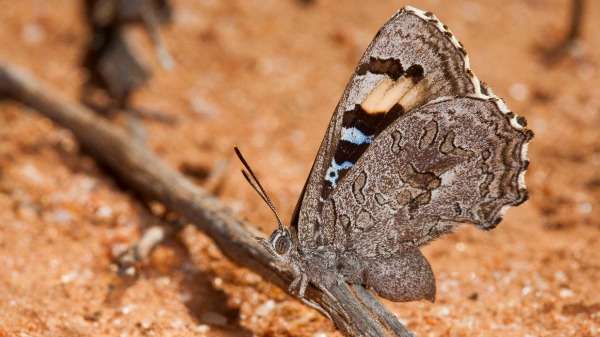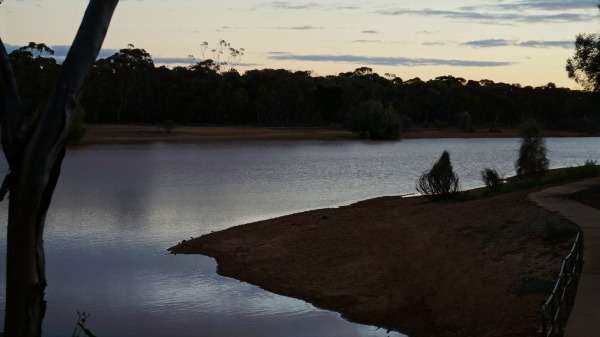Goldfields ant nests under surveillance for elusive butterfly

Researchers searching for the rare arid bronze azure butterfly (Ogyris subterrestris petrina), which recently had its conservation status upgraded to critically endangered, are utilising existing data on ant nests to find their prize.
The elusive butterfly has a remarkable relationship with the 'pale-coloured' sugar ant (Camponotus terebrans): it lays its eggs beside the ants' nests which the larvae then infiltrate.
The larvae grow and pupate (develop) inside the nest, whilst being fed and protected by the ants.
Department of Parks and Wildlife senior research scientist Dr Matthew Williams says the search for more butterfly colonies is ongoing.
"[It] includes using new ant nest location data from CSIRO's Dr Carl Gosper's studies of ants in the Great Western Woodlands," Dr Williams says.
"Because the butterfly larvae require about 500 ants for each larva, we selected from Dr Gosper's data, the sites with the highest number of sugar ants collected in the ant traps and started our search from there.
"The butterfly can only be found during its peak flight seasons, in May and September, as the larvae are impossible to detect when living deep within the sugar ant nests.
"After emerging from the ant nest, the butterflies hang around in colonies and the males have territories which they patrol."
The scientists have visited four such sites and at two found large colonies of sugar ants but no butterflies.
"We will be searching two or three sites per trip as well as re-visiting sites already searched and are hoping to continue searching…in September or October," he says.

Dr Williams says the butterfly, endemic to WA, was first listed as threatened in 2009.
"But now as there is more data about the butterfly, the federal Threatened Species Scientific Committee has assessed its status as critically endangered," he says.
"This is a big deal because there will be increased effort into researching the butterfly as it is now a matter of national environmental significance."
The butterfly was discovered in the early 1980's 12km south of Kalgoorlie near Lake Douglas, but in 1993 the population disappeared until 2006 when a butterfly enthusiast saw an Ogyris butterfly near Mukinbudin.
Dr Williams says the butterfly was easily identified.
"Its markings are quite distinct: medium to dark in colour with purple markings on the wings, but we still did genetic testing for confirmation," he says.
Provided by Science Network WA




















